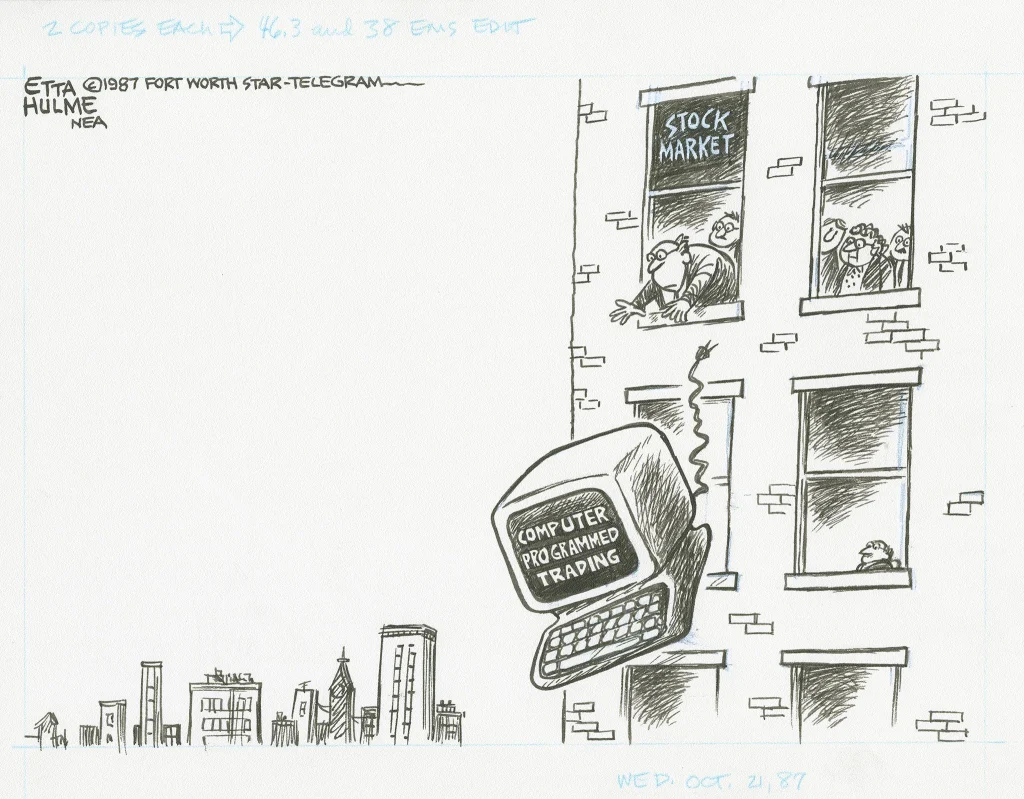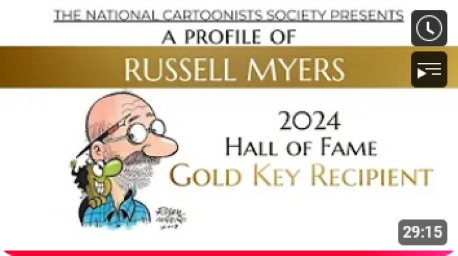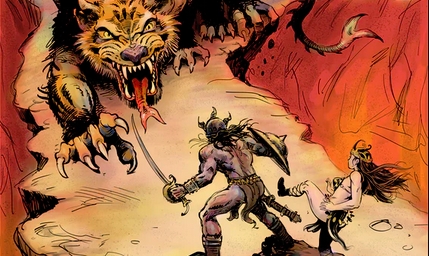CSotD: Here We Are Again
Skip to comments
I’d been at the paper — not the above paper, mind you — for about four months when the markets crashed in 1987 and I had to suddenly learn about stocks and bonds and such. Fortunately, I’d just spent three or four years writing about residential real estate and commercial development, so it was more a matter of filling in blanks than starting from scratch.
And while the Daily News suggested panic, there was less of that than of deep questioning. I suppose you can’t sell a lot of papers with a headline that says “Deep Questioning!” but my first story was mostly advice from local brokers to sit tight and ride it out.
And I managed to avoid mentioning roller coasters. This Robert Day illustration began in 1942 as a New Yorker cartoon with the caption “We got this far and then we were frozen,” but someone deleted the caption and re-named it as above. I hope Day got a share of whatever came from it, though I’d be a little surprised to find that we’d gotten all the way to 1942 without the metaphor coming up.
Cartoonists have certainly made the most of it since.
Roller coasters are a lot more pleasant than this Rollin Kirby illustration of the 1929 crash. There’s a que sera sera optimism to the roller coaster concept, some circularity implied, while this more accurately illustrates the despair of the collapse of a system with dubious rules and a whole lot of people over-subscribed to it.
It was a lot easier to lose everything in 1929, and we’ve since made jokes about yokels putting their money in their mattresses because they don’t trust banks, but banks couldn’t be trusted back then, and the FDIC is only one element of how things changed to prevent another such disaster.
Anyone who sings “Mister, we could use a man like Herbert Hoover again” needs to study a little history. It’s like wishing we had doctors like the ones who treated James Garfield.
Which I guess we’re also moving towards but we’ll deal with that another day.
In 1987, the problem was largely exacerbated by computers that were programmed to sell when a stock hit a low point and the solution was to build in a set of brakes that interrupted the cascading dominos by bringing all markets to a temporary halt while human beings figured out what was happening.
Not that humans are all that wise. Herblock had noted their baleful influence two years before the ’87 crash, and they had already done plenty to upset the economic apple cart.
The iron mine in my hometown was the victim, in the ’70s, of one of the first leveraged buyouts, having been bought, stripped and killed. My father had seen it coming and resigned rather than help destroy our local economy, but of course it happened anyway.
He had explained the concept of a leveraged buyout to me, but today we don’t even mention the term since all buyouts are heavily leveraged, and their destructive impact is equally assumed.
At roughly the same time, then-wife and I began to be able to bank a little of our pay and so we asked my grandfather for advice on what to do with it. “Spend it,” he counseled us, on the basis that he had spent a great deal of his career obtaining mineral rights around the world.
“One of these days,” he said, “all those little brown people are going to ask ‘Where’s mine?'” and of course they did and continue to and it has certainly changed the game. For the better, if you are a fan of all people and for the worse if you root only for the white team.
My grandfather, in his retirement, had some regrets for the direction the steel industry was headed and also remarked that if they’d spent as much cleaning things up as they spent lobbying against the Clean Air Act, Pittsburgh would have been a paradise.
What hasn’t changed is the herd instinct on Wall Street, which Kal captured in this classic cartoon two years after the ’87 crash, and so 36 years before the current debacle. Plus ça change.
Celebratory statues of bulls and of defiant little girls don’t do half the job of summing things up as this cartoon does, but of course people prefer to celebrate than to contemplate.
Like Herblock, Hulme saw trouble ahead in 1985, but she put the blame squarely on the shoulders of Ronald Reagan who was, granted, not her favorite president to begin with.
But he’s beginning to look pretty good, given that at least he didn’t dip back into William McKinley’s bag of tricks attempting to rebuild the Gilded Age.
We’ve just seen a genetics team recreate the extinct dire wolf, and people talk about bringing back mammoths, but nobody explains how they’re going to recreate the environments in which those animals prospered and it seems Dear Leader is equally excited about restoring the Robber Barons and equally silent about the environment they require.
In fact, he keeps describing the riches created by tariffs as if it were money coming from foreign countries rather than from the pockets of American consumers, and it’s becoming increasingly clear that he’s not running a con game. He genuinely doesn’t know how tariffs work.
Somebody must have told him that at the end of the 19th century, tariffs paid our way and we had no income tax, but if they explained how badly that worked out and why we stopped running things that way, he had stopped listening. Or possibly he doesn’t care.
It doesn’t matter which, because I don’t think we’re going to dig out of this one as easily as putting some restrictions on computers, and however much we may regret Hoover’s solutions to the Great Depression, at least he wasn’t actively trying to make things worse.

Other observers have noted that much of this could stop if Congress would act, but it’s equally true that if frogs had wings they wouldn’t keep hitting their little butts on the ground.
Absent some action by Congress, we’re going to have to take our medicine despite the counterindications and side effects.









Comments 18
Comments are closed.